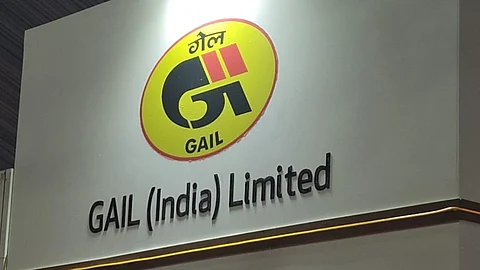
- News Updates
- PSU Watch
- Defence News
- Policy Watch
- हिन्दी न्यूज़
- Jobs Watch
- States News
- Event News

New Delhi: Gas Authority of India Limited (GAIL) is charting an aggressive expansion path to boost its gas transmission volumes to 133-134 MMSCMD by Financial Year 2026-27, underpinned by a dual strategy of securing additional regasification capacity with multiple terminal operators while simultaneously expanding its own Dabhol LNG facility to 10-12 MMTPA. According to Rakesh Kumar Jain, GAIL's Chief Financial Officer and Director (Finance), these moves are essential to meet projected demand growth across India's industrial, power, and city gas distribution sectors.
The volume increase represents an 8-10 MMSCMD jump from the estimated 123-124 MMSCMD for Financial Year 2025-26, compensating for temporary disruptions in the current year caused by monsoon damage, refinery connectivity delays, and reduced power sector offtake, Jain said during a recent investors' conference call.
GAIL currently operates with 2.5 MMTPA of regasification capacity booked at Dahej, 1.5 MMTPA at Dhamra, and 2.5 MMTPA at its Dabhol LNG terminal, providing a combined 6.5 MMTPA of regasification infrastructure. However, Jain flagged that these existing capacities are already becoming inadequate as new LNG supply contracts commence.
"When next year one more contract will start supply (from Vitol), certainly we will be needing more regasification capacity. Currently, we are working to tie-up the additional regasification capacity with the terminal operators where we feel that the market is there," Jain stated.
Rather than relying solely on owned infrastructure, GAIL is actively engaging with terminal operators across India to secure additional regasification slots. This third-party capacity strategy provides flexibility and risk distribution, allowing GAIL to match LNG import volumes with market offtake without committing to massive capital expenditures on new brownfield facilities.
GAIL's Dabhol LNG regasification terminal is being positioned as the cornerstone of its long-term regasification strategy. The facility, now fully weatherised with a current nameplate capacity of 5 MMTPA, is currently constrained by the absence of a heating system — critical infrastructure that enables year-round operations at full capacity.
Without the heating system, Dabhol currently operates at approximately 50 percent utilisation. "The nameplate capacity of that terminal is 5 MMTPA. But only one constraint still we are experiencing is that we do not have the heating system," Jain explained. "Whenever RGPPL runs, we are able to take the advantage of the heating system available there. But in the absence of heating system, we are expecting to utilise around 50 percent of the capacity. And the heating system will also be available some time in '26-'27".
Once the heating system becomes operational in FY 2026-27, Dabhol's utilisation is expected to reach full nameplate capacity of 5 MMTPA.
Beyond current operations, GAIL has already initiated expansion of Dabhol from 5 MMTPA to 6.5 MMTPA, with further expansion discussions underway to push capacity to 10-12 MMTPA. This aggressive scaling reflects management's conviction that India's natural gas demand will substantially exceed current regasification infrastructure, necessitating significant new capacity additions.
Jain summarised the dual-track approach: "So, to sum up, we are pursuing two courses of actions. One, we are tying up more regasification capacities with different terminal operators. And second, we are also taking actions to expand our Dhabol terminal beyond the existing nameplate capacity of 6.5 MMTPA and thereafter, from 6.5 to say 10 or 12 MMTPA".
The Dabhol expansion is particularly significant given the LNG terminal's strategic location in Maharashtra and GAIL's operational control, which contrasts with third-party capacity that may face competing demands from other suppliers.
The projected 8-10 MMSCMD volume growth will come from multiple sources. City gas distribution networks are expected to contribute 3-3.5 MMSCMD from normal sector growth. Power sector volumes, which declined by approximately 3 MMSCMD in FY26 due to monsoon-driven lower electricity demand, will recover fully, said Jain.
Two new major pipeline projects — Srikakulam-Angul and MNJPL (Mundra-Nagpur-Jaipur Pipeline) — are expected to contribute around 2 MMSCMD of incremental volumes once commissioned. Additionally, refinery volumes, which dropped by 2-3 MMSCMD in FY26 due to temporary connectivity issues, are anticipated to normalize.
Restoration of GAIL pipelines damaged by severe monsoon flooding will recover approximately 1-1.5 MMSCMD of previously stranded volumes.
(PSU Watch– India's Business News centre that places the spotlight on PSUs, Bureaucracy, Defence and Public Policy is now on Google News. Click here to follow. Also, join PSU Watch Channel in your Telegram. You may also follow us on Twitter here and stay updated.)
